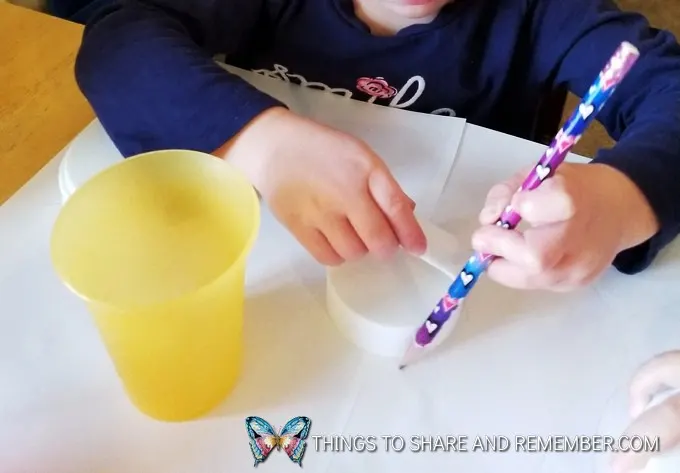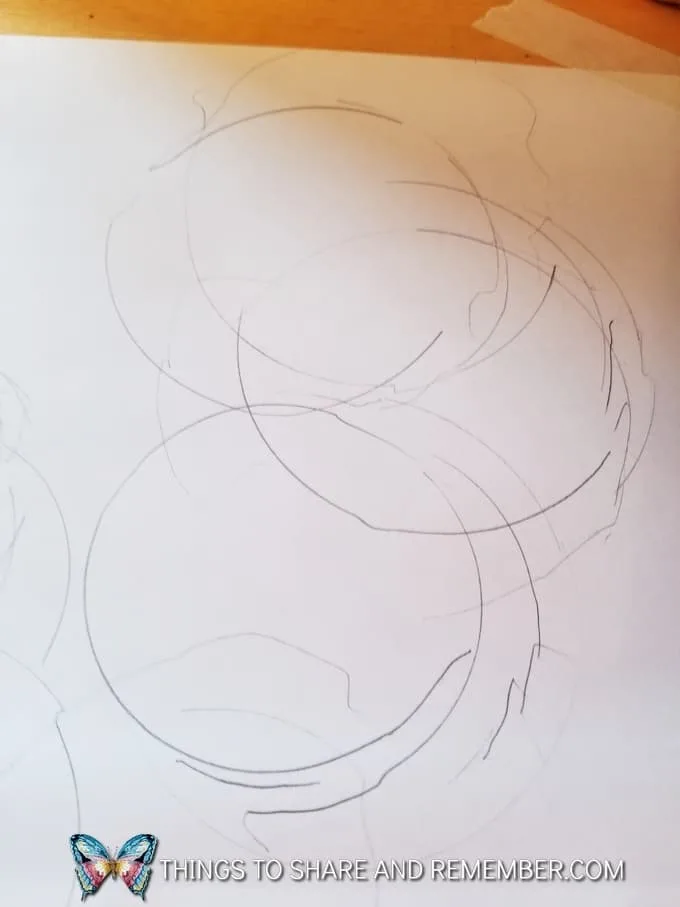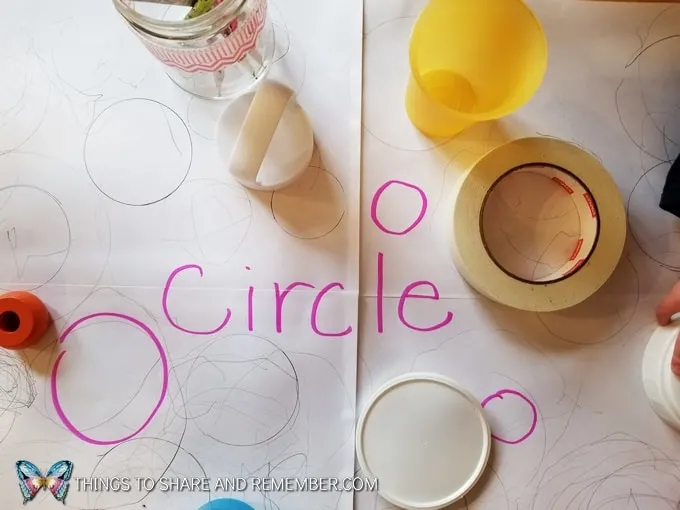Learning about shapes in early childhood is a basic. Preschoolers learn to identify and name shapes and through shape activities are introduced to math vocabulary and concepts. Children learn about shapes through various materials and activities but there’s nothing like hands-on learning! That’s what I love about this Tabletop Math: Circles activity from Mother Goose Time.
[xyz-ihs snippet=”Thank-you-for-reading-“]

Tabletop Math: Circles
Tabletop Math: Circles activity was part of our lesson on jaguars in the Rainforest Adventure themed box from Mother Goose Time. I love simple ideas that I can quickly set up because let’s be honest – it might not happen otherwise!
Set up this simple shape invitation to play:
- Tape 4 pieces of legal size paper together (or one large sheet of paper)
- Tape it to the table
- Gather different sized cups, containers, and lids – anything round
- Set out pencils for tracing
- Add crayons and markers if desired

The children trace around the items making circles.

Now, this sounds pretty easy, but in actuality, it’s not especially if a child has never done it before.

Tracing around an object develops eye-hand coordination and fine motor skills. It requires using both hands, or both sides of the body, to complete the circle successfully.

After demonstrating how to trace a circle, everyone had a try. Some were frustrated because the container or lid shifted while tracing. I placed their hand on the object and showed them how to hold it there while they traced. Everyone became successful!

I only offered pencils at first so crayon and marker didn’t transfer to the objects we used for tracing. Sometimes it matters and sometimes it doesn’t but I think tracing with a pencil’s fine tip is usually easier. Then they can color the circles later so this activity can be left out all day so the children can add to it.

Tracing offers a great opportunity for fine motor skill development needed for future writing.

Using a variety of sized objects gives them experience working with different types of materials and challenges their skills. The group activity in itself is wonderful as well. Children learn about using space, cooperation, resolving conflicts, language skills, and social relationships while contributing to a community project.

It was fun to see their attention spans held while tracing circles. A new (for some) and fun experience! Even the school-aged kids drew some circles after school. Once children learn how to trace, they start to experiment with tracing all kinds of things on their own.

When observing this activity:
- Notice if the child can identify the shape’s name.
- Did the child become easily frustrated?
- What hand does the child hold the pencil in?
- Does the child use both hands?
Circle Materials
